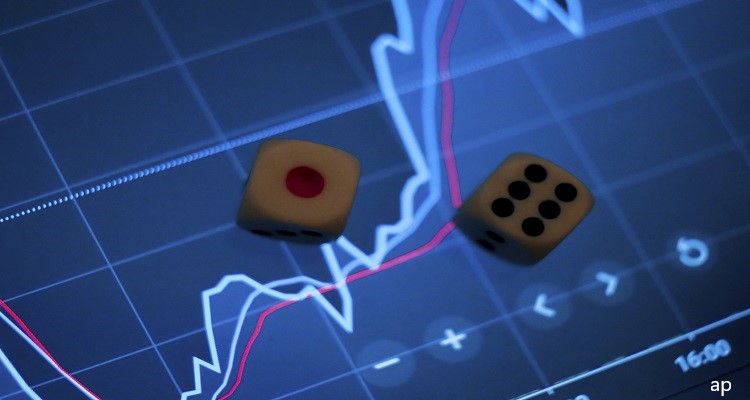
ARK Invest was put to the test in recent weeks as it faced questions around its multi-billion dollar funds’ influence on stock prices and capacity issues. And then the rug was pulled out from the tech sector.
Founder and CEO at ARK Invest, Cathie Wood, addressed concerns in yesterday’s monthly mARKet webinar, beginning with a big picture discussion on potential inflation - and disruptive deflationary undercurrents – ahead.
Is Inflation Going to Be a Problem?
The rapid rise in 10-year U.S. Treasury bonds occurred “much faster than anyone - whether technicians or economists - expected, especially given the [U.S.] Fed’s stated support for lower interest rates,” said Wood, a former economist herself. “This was a bit of a shock to the system.”
But Wood wasn’t concerned. She focused on what bond markets were incorporating. “We do know that in the next few months we will be dealing with the ‘Base Effect'. CPI-based inflation could approach 4%.”
She thinks that any inflation could be temporary. “I wouldn’t be surprised to see a 3% [10-yr] US Treasury yield.”
This question around inflation is distracting investors from lasting, structural deflationary forces cumulating in the background – some good, and some bad – that will drive innovators and destroy laggards, she feels.
Innovation Will Drive Deflation
Wood discussed Wright’s law in the context of innovation and deflation: With experience comes progress, and cost decline. And that forms a widening gap between those investing heavily in new technologies and those that aren’t. Eventually, there’s a tipping point where the affordable technologies tilt the scales for entire industries.
“In the case of electric vehicles, the prime mover there is going to be the battery pack system or the battery. For every cumulative doubling in the number of electric vehicles produced, costs will decline at a 28% rate for the battery,” said Wood.
“When you think of EVs going from 2.2 million in sales last year to 4.4 [million]….we think that’s not going to take very long – and that is why we see auto prices deflating during the next few years, on balance. The electric vehicle, from our point of view, is going to drop to, on average, US$18,000 in 2025 – the demand for electric vehicles is going to explode... that gives you as a sense of the good deflation.”
The bad deflation will see past doubters in decline and trying to catch up. For example, “we think auto companies are going to face it,” said Wood, “The surprise for us over the years has been how long it took traditional auto manufacturers to invest aggressively in electric vehicles – it’s only been the last two years. Most auto consultants, manufacturers and analysts believed that electric wouldn’t be relevant to them until the mid-2020s –more than a decade later. Well, that was wrong, and I think it’s going to be wrong for a lot of other industries as well.”
A Stronger Bull Market
What happened in the last week went in an opposing direction to the deflationary undercurrents, with Wood describing a “massive, severe rotation into value stocks - that took off with interest rates.”
“People worried – but what happened was something very healthy – the bull market broadened out into value in a more serious way. This is something I had expected soon after the coronavirus fears started diminishing and I’ve been surprised at how long it took to happen,” Wood said. “If anything, the bull market has broadened out. It is becoming stronger.”
Investors need to put the rate increases in context, says Wood. “I don’t believe the market ever priced in 1%, 1.5%, 2% long term [U.S.] Treasury yields [to begin with], and the way we know this is that - every time the S&P 500’s P/E ratio moved into the 20-25 times range, the market sold off – that suggests that investors were thinking about normalized interest rates – [but] they never gave the market credit for the interest rates as they were falling towards 0.5%. The assumption was ‘no, we have to base our assumption on normalized interest rates,’ and it looks like that’s probably in the 4 to 5% range, which was the range for GDP growth for many years - nominal GDP growth. We think there has been a structural shift down in nominal GDP growth. The innovation that we analyze is growing very rapidly – at 30, 40, 50%, for electric vehicles, 80% annualized rates, but their bases are too small to move the needle on GDP. Meanwhile, they’re starting to disintermediate and disrupt the traditional world order. We would not be surprised if the true normalized interest rate was closer to 3[%],” said Wood, “If 4-5% is associated with 20-25 times as a P/E ratio, 3% would be associated with 33 times. Maybe this is a clue, that true underlying growth is that scarce, and there should be a reward for it.”
Too Popular?
Can investors overly-reward these rare 'true' growth stories, to the extent that an ARK Fund gets too big and is unable to efficiently allocate capital?
“The short answer is, I do not believe that. What I do believe happened this past year was a recognition on the part of asset managers generally, and advisors, that they were missing innovation as a category in their asset allocation. It takes a while for innovation to enter broad-based benchmarks and for more people to get exposure,” said Wood. “If we are right [about the 5 innovation platforms and 14 technologies] – all of them are entering the sweet spot of their S-curves – and some of them are converging... we think that the capacity for innovation-based strategies is also going to grow exponentially.”
What’s Worth Worrying About
Exponential growth could leave a void for investors to watch out for: “companies who didn’t invest enough to embrace innovation and spent the last ten years catering to shareholders who wanted profit now and… leveraged up to buy back shares. Now they have to service that debt, and invest aggressively, as their businesses are deteriorating,” said Wood.
And in terms of interest rates, “we learned a lot in ‘08/09 – or in the aftermath of ‘08/09 about monetary policy ease, dramatic ease, and the impact on inflation it was going to have. I was wrong. I thought we were going to be facing an inflationary environment. And the reason I was wrong was, the velocity of money continued to fall. People started to save more, and they weren’t buying goods and services because they were fearful prices and interest rates were going up. But no, the opposite, they were still struck with fear after ‘08/09. We almost had a financial meltdown then,” said Wood. “We’ve had the coronavirus – that has caused another discrete move down in velocity [of money] and savings rates are huge – but if we are right and deflation becomes the bigger topic, that will actually encourage a continued decline in velocity. Why? Because if you know that goods and services are going to be cheaper a year from now, or a few months from now, you will defer your purchases. It’s the opposite of an inflationary environment. And I think this could be the biggest head-fake out there.”
Passionate about Investing in New Ideas?
Explore the latest Global Thematic Fund Landscape report here









.jpg)












